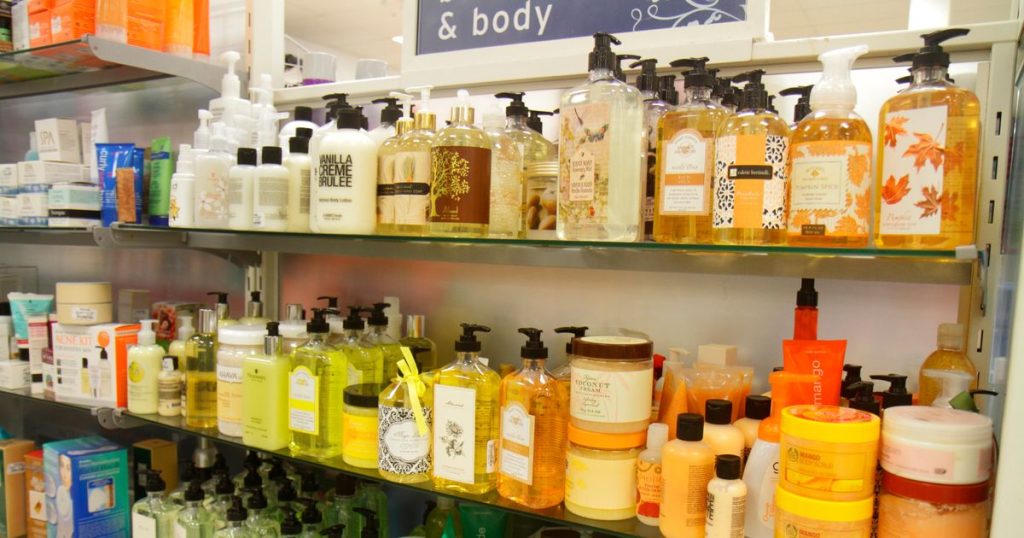Off-price retailers like TJ Maxx, Marshalls, and Ross have become beloved destinations for bargain hunters, offering deeply discounted prices on clothing, accessories, home goods, and beauty products from popular brands. The thrill of the hunt for hidden gems has even become a sensation on TikTok, with creators sharing haul videos that showcase their exciting finds. These stores have mastered the art of creating a treasure hunt-like shopping experience, making the discovery of coveted products at significantly reduced prices feel like a victory. For beauty enthusiasts, this often means scoring high-end or hard-to-find items at a fraction of their original cost, making it easier to stock up on essentials, experiment with new brands, or even grab discontinued products before they disappear for good.
However, while the allure of discounted beauty products is undeniable, there are important considerations to keep in mind. Beauty products, particularly those with active ingredients, can be risky purchases at off-price retailers. Skin care items, in particular, rely heavily on proper storage and handling conditions to maintain their effectiveness. Unfortunately, there’s no way to know the conditions under which these products were stored or transported before they reached the store shelves. Sensitive ingredients like vitamin C, retinoids, and chemical sunscreen filters are especially vulnerable to heat, light, and humidity, which can degrade their potency and destabilize their formulation. This degradation not only reduces their benefits but can also increase the risk of skin irritation and shorten the product’s shelf life.
Another significant concern is the potential for products to be tampered with or opened by other shoppers. Cosmetic chemist and licensed esthetician Esther Olu explains that products like vitamin C serums can oxidize when exposed to air and light, breaking down into less effective forms. This degradation is often visible through a color change, as clear or pale yellow products may shift to orange or brown. Similarly, board-certified dermatologist Dr. Geeta Yadav notes that opening or testing products in-store introduces bacteria, especially in liquid and cream formulations, which can thrive in their dark and damp environments. Air exposure can also render unstable ingredients less effective over time, compromising the product’s safety and efficacy.
To help shoppers make informed decisions, experts recommend paying close attention to packaging. Opaque or dark bottles, airless pumps, and press-top dispensers are ideal for shielding light-sensitive ingredients like vitamin C and retinol, preventing breakdown. These types of packaging also minimize exposure to air and direct contact, reducing the risk of contamination. On the other hand, jars with open-mouth designs, commonly used for face creams and body butters, are more prone to contamination. Wand applicators, such as those found in mascaras or lip glosses, also pose a higher risk of introducing bacteria due to repeated contact with the skin. If a product’s packaging appears damaged, faded, or warped, it may have been exposed to unfavorable conditions, making it a risky purchase. Additionally, signs like ingredient separation or an off texture can indicate degradation.
When considering a purchase, it’s crucial to think about the product’s expiration date and whether you’ll use it before it expires. Skin care products often come with a period after opening (PAO) symbol, which indicates how many months the product is safe to use after being opened. If this symbol is missing or unclear, or if the product has been tampered with, it’s best to exercise caution. Tools like CheckFresh can help determine the manufacturing date by inputting batch codes. Sunscreen and natural or organic products, which may have fewer preservatives, are particularly risky, as their active ingredients can degrade with improper storage. Powder-based products, tools like brushes and gua shas, and anhydrous formulations like balms and body butters are generally safer options due to their stable formulations and lower risk of contamination.
While off-price retailers offer incredible deals, it’s important to approach beauty purchases with a critical eye. Knowing how a product should look, smell, and feel when purchased new can help you spot potential issues. By choosing products with protective packaging, avoiding items that have been tampered with, and prioritizing stable formulations, you can enjoy the thrill of bargain hunting while keeping your skin happy and healthy. Off-price retailers remain a favorite for scoring great deals, but a little homework before making a purchase can go a long way in ensuring you find treasures that are both affordable and safe.















